Following is an excerpt from a Business Standard report in sify.com.
The Institute of Chartered Accountants of India (ICAI) has proposed to set up a Centre for Excellence in Bhubaneswar.
"ICAI currently has around 600 members in Orissa and we intend to set up a Centre of Excellence in Bhubaneswar. We have sought the cooperation of the state government to allot land to us", said Amarjit Chopra, president of ICAI.
… This is set to be the first Centre of Excellence of ICAI in the eastern region.
In 2007 ICAI had first announced setting up of 11 such centers. Following is an excerpt from a 2007 Economic Times report.
Institute of Chartered Accountants of India (ICAI) is planning to open centres of excellence in 11 cities across India at a cost of Rs 100 crores with an aim to diversify avenues and broaden communication skills of professionals. "We will be opening up centre of excellence in 11 Indian cities, which would primarily cater to broadening the outlook and skill set of chartered accountants", ICAI’s newly appointed President Sunil Talati told reporters after taking charge.
Talati said there was a need to impart management-level education to CAs, which prompted the institute to go in for the centre of excellence.
The first such centre would come up at Hyderabad, while other cities where the centre would be set up are Mumbai, Chennai, Kolkata, Noida, Kanpur, Ahmedabad, Pune, Jaipur, Bangalore and Chandigarh, Talati said.
He said the course length would be between three and six months adding that it would be optional for CA professionals. "We have plans to tie up with Management institutes like IIM Ahmedabad and Kolkata Business school for this initiative," he said.
Talati said the institute would provide classroom facilities to CAs and will give them exhaustive training in communication and presentation skills.
"Trade, business and commerce need this kind of professional services and, therefore, we are going in for this course," He said.
The website of the ICAI Hyderabad Center of excellence is http://www.icaihyd.org/centre_excellence.php. The following letter from that site explains the purpose of the center.
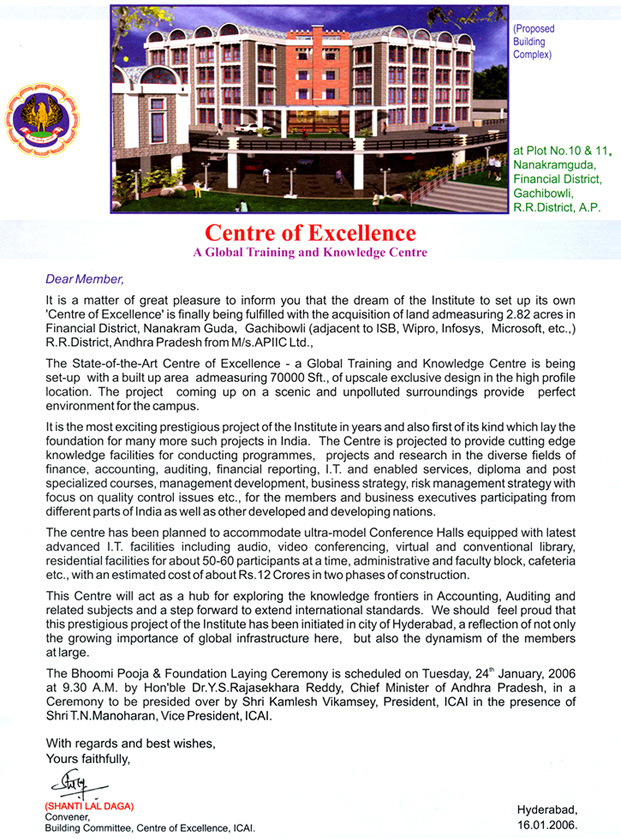
November 15th, 2010
Following are excerpts from the interview at http://www.livemint.com/richardlevin.htm.
Leading Indian institutes are good at teaching but they are not research-oriented. What should be the focus now?
The IITs and IIMs are basically good teaching institutions… The biggest contribution made by research universities is that they have advanced knowledge as well as educate quality students. The requisite for making that happen is, one, opening up the structure of faculty compensation so that you can actually attract world-class individuals.
The strong Indian nationals go to graduate schools in the US and they will not come back if they don’t get compensation close to what they get aboard. And right now, they would not unless there is some change in legislation.
The second is the state support—the need for quality laboratory, infrastructure and competitive research grant to advance their work. While there have been some advances in research grants in India, there is still by and large not the quality of the facility that you can have access to in the US, parts of Europe or indeed recently in China.
…
You had an interaction with Ratan Tata (chairman of Tata group). Is he sponsoring a chair?
There is nothing particular to announce now. We are talking to lots of leading Indian families who are interested in Yale getting more involved in India. I hope there will be some support for our relationship. There is a lot of philanthropic interest in higher education of India. I hope Parliament will open the market up to those philanthropists to build universities. They can give some money to Yale, but that will not have the impact.
India is very brand conscious and it seems it wants foreign universities to set up shop here. That will help, but that is not the answer. The answer is great Indian universities and Indian brands. You have done it with companies—you got Tata, Reliance (Reliance Industries Ltd and Reliance-Anil Dhirubhai Ambani Group), Infosys (Technologies Ltd), you got Wipro (Ltd). These are great global brands now. You can do the same with Indian universities rather than co-branding like Yale-India Campus or Harvard-India Campus.
The impression here is Yale is interested in partnering one or more of the proposed innovation universities. Is that true?
We can have partnership in more than one area (but) not as co-brands. There will be some exchanges.
We may have some advisory role, having some of our faculty helping establish these universities. No joint investment. I think the real hope (for innovation university) is private sector support.
How do you see the growth of education in India vis-à-vis China?
… To compete successfully 20 years from now, India and China will need much stronger research universities. China is very aware of this and politically committed to it.
China is making big investments in research laboratories. They are putting lots of money in top universities to make them competitive with Harvard, Yale and Stanford. They are focusing more on a small number of top universities. Politically, that is very hard for India to do because of India’s democracy. It is very hard for America to do so. Solution is to allow the private sector to have a big role in higher education.
I believe you will succeed because India has built great companies in (the) last 20 years. I think a lot of people responsible for that want to give back to the Indian society. They are eager to do what Leland Stanford (founder of Stanford University) and John D. Rockefeller (founder of Chicago University and Rockefeller University) did in America over 100 years ago. If I am not mistaken, all Parliament needs to do is not to give the money away but pass legislation so that will happen.
The term Ivy League seems to have caught on. After China branded some of its university as C-9 or the Chinese Ivy League, India is set to designate at least nine top universities the Indian Ivy League. Does this help?
It reflected something really in China. Those are the universities that China is making disproportionate investment (in). In fact the government made those investments before naming them as Ivy League of China. I don’t know much about the Indian Ivy League. Unless there are much resources, I don’t think it will have that much of impact.
… prashant.n@livemint.com
I have underlined the part that I thought are important. President (of Yale) Levin is right in his answers. Under the current system Indian government can not pay large enough compensations that will attract a large number of top-quality Ph.Ds and faculty from abroad to populate proposed world class research and innovations universities in India. Only private universities backed by Billion dollar level endowment as well as a viable plan to have global level annual funding year after year (note: My university, Arizona State U, has an annual budget of $1.7 Billion plus; Harvard and Stanford annual budgets are about $3 Billion) have a chance to become world class. Fortunately Vedanta University is exactly such a plan. But unfortunately, the Indian government, instead of helping it and showcasing it such that other billionaires from India follow it, is creating hurdles.
November 13th, 2010
Following is from an article in tathay.in.
The proposed Xavier University in Odisha seems to be pushed inside the deep fridge.
Chief Minister Naveen Patnaik eagerly approved the proposed Xavier University in the state in July, 2009.
Thanks to the initiative of Fr.P T Joseph, Director XIMB who brought the issue to the authorities in the Odisha Government about the requirement of Xavier University in the state.
Ananga Udaya Singh Deo, Minister Planning & Coordination, who raised the issue in the State Cabinet in a strong way, impressed the Chief Minister.
With the green signal of the Chief Minister the authorities in XIMB moved ahead with accquiring land nearby the Capital City and a Detailed Plan for the proposed university was prepared.
Every thing is ready.

So every body expected that the much needed Xavier University Bill will come up in the Winter Session of the Odisha Legislative Assembly.
Now on 23 November, Winter Session of the OLA begins.
However there is no sign of the proposed bill on Xavier varsity, revealed an officer in the Department of Law.
Why is it so?
Officials in the Department of Higher Education reveal that though the Xavier University proposal has been approved by the Chief Minister, no separate bill for the proposed varsity will be presented in the Assembly.
An Umbrella Act is being prepared for all the private and professional universities, which is likely to be tabled in the House.
However legal pundits opine that such an Umbrella Act will not stand scrutiny of law.
That is why the Umbrella Act, which was posed to Department of Law during last August, is yet to be vetted by the legal experts.
Legal luminaries feel that “an Umbrella Act for Universities is bad in eyes of law”.
That is why such an Umbrella Act adopted by the Government of Chhatisgarh was set aside by the Apex Court in recent past.
Educationists feel that “If one does not have the right connections in the Corridors of Power in Odisha, it is impossible to move an inch”.
With no Godfather backing the Xavier Institute of Management, Bhubaneswar (XIMB), the Director Fr. Joseph is running from pillar to post to clear the Xavier University Bill.
However no body knows where the file is gathering dust in the State Secretariat.
This is really unfortunate.
November 11th, 2010
Following is from http://pib.nic.in/release/release.asp?relid=66918.
The civil work for Package I – medical college started at all the sites in last week of May, 2010 and is scheduled to be completed in 15 months except Patna where duration is 18 months. For package II – medical college, work started in the middle of September, 2010 and it is scheduled to be completed in 24 months from commencement of work. The civil work at all the six sites is at various stages.
At Rishikesh, the provision of basement for medical college has been deleted due to high water level during excavation. Consequently, structural analysis has been re-done and designs was got revised by the Design DPR consultant. At Bhubaneswar, there was resistance from local people for mobilization of activities of the contractor. As such, the work at Rishikesh and Bhubaneswar site are slightly behind the schedule.
An amount of Rs.622.37 Crore for construction of medical colleges and an amount of Rs.1330.71 Crore for hospital complex in respect of all the six sites were allocated. Mobilization advance of 5% has so far been released.
Out of 13 institutions, 10 institutions involve both civil work and procurement of medical equipment and the remaining 3 involve mainly procurement of equipment. Civil work at 4 medical colleges, viz. Trivandrum Medical College, Bangalore Medical College, Salem Medical College and Sanjay Gandhi Postgraduate Institute of Medical Sciences, Lucknow has been completed. The work at Nizam Institute of Medical Sciences, Hyderabad; Jammu Medical College and OPD and Academic Block of Kolkata Medical College is likely to be completed by December, 2010 and remaining 3 institutions in 2011.
Procurement of medical equipments for all the 13 medical college is expected to be completed by March, 2011.
This information was given by Minister for Health and Family Welfare Shri Ghulam Nabi Azad in written reply to a question raised in Rajya Sabha today.
November 10th, 2010
Following is from http://pib.nic.in/release/release.asp?relid=66896.
The National Development Council has approved the setting up of fourteen Universities aiming at world class standards and dedicated to innovation. These universities are proposed to be located at Bhubaneswar in Orissa, Kochi in Kerala, Amritsar in Punjab, Greater Noida in Uttar Prdesh, Patna in Bihar, Guwahati in Assam, Kolkata in West Bengal, Bhopal in Madhya Pradesh, Gandhinagar in Gujarat, Coimbatore in Tamilnadu, Mysore in Karnataka, Pune in Maharashtra, Vishakhapatnam in Andhra Pradesh and Jaipur in Rajasthan respectively.
A concept paper finalized by the government is available on website www.education.nic.in and includes the scope for public private partnership.
The proposed universities for innovation are to be established across two plan periods of XIth and XIIth Plan.
This information was given by the Minister of Human Resource Development Shri Kapil Sibal, in a written reply to a question in the Lok Sabha today.
It was not clear to be what the National Development Council is. Searching in the web I came across the following:
The Planning Commission works under the overall guidance of the National Development Council, India’s prime policy-making body, which guides the nation on the development process.
The planning commission page http://planningcommission.nic.in/plans/planbody.html has the speeches of the PM and CM of various states in various National Development Council meetings. In the most recent meeting the PM addresses his cabinet colleagues, the CM and ministers from various state delegations, and the planning commission members.
November 10th, 2010
Following is from the PIB release http://pib.nic.in/release/release.asp?relid=66858.
A proposal was received from the Ministry of Youth Affairs & Sports to convert Rajiv Gandhi National Institute for Youth Development, an institution deemed to be university, at Sriperumbudur into Rajiv Gandhi Central University/National Institute of Youth and Sports. In order to examine the proposal and to make suitable recommendations, the Government has constituted a Committee …
In the past we have suggested a similar institution in Rourkela, the cradle of Hockey in Odisha and India.
Following is from another PIB release http://www.pib.nic.in/release/release.asp?relid=66771. (Thanks to kalahandia.blogspot.com for the pointer.)
The Union Cabinet today approved the establishment of a National Centre for Molecular Materials (NCMM) at Thiruvananthapuram in Kerala as an autonomous institute of the Government of India (GOI) under the Department of Science & Technology (DST) at a total cost of ` 76.7 crore for five years with an outlay of ` 14.55 crore for the Eleventh Plan Period.
The Centre will be located on 40 acres of land provided by the State Government, free of cost.
The Centre will be the first of its kind in the country and will pursue high-end science and develop technology in niche areas like sensors for biomedical devices, materials for solar energy harvesting and space electronics. Through the Centre, the Government attempts to create a national innovation infrastructure that channels knowledge systems to wealth creation in the long run.
The Centre will collaborate with other academic institutions and actively interact with industry and user groups. It will generate human resources in the form of well-qualified researchers, technicians and entrepreneurs who can help develop the use of such materials for technological applications and exploit the market potential in this area.
For long Odisha has been trying for a research center on materials along similar lines, but without much success.
November 9th, 2010
Following is an excerpt from a interview in http://chronicle.com/article/Yales-President-Talks-About/125273/.
Q. By "innovation," what do you mean? Could you give me some examples?
A. The biggest one is this: If India is going to build some truly high-quality institutions, it is going to have competitive compensation on a global scale. One of the things the Chinese have done, … they have essentially decided to break their salary scales to recruit back Chinese expats working in the U.S. and U.K. to be leaders and senior professors at their top institutions. And India has an extraordinary expat academic population. But it is very hard to get those people back in the public universities [here], because they are not attractive-enough jobs. So "innovation universities" offer hope that they’ll be able to provide competitive compensation and merit-based compensation.
Q. Did you talk with Kapil Sibal, India’s minister in charge of higher education, about this?
A. Yes, with the minister and many other people here. … The whole point of innovation universities is that both public and private innovation universities in the legislation [to allow for their creation] will have the possibility of not paying [faculty salaries] according to the standard scale.
Q. Why is that issue here in India important to you at Yale?
A. If the question posed to us is, Help us build world-class institutions, my first piece of advice is you can’t do it and pay people 20 percent of what they earn in the U.S. [He laughs.]
The last point is a very important one. While there are many top world class researchers in India, who are only paid 20% of what they would earn in the US, it is not possible to have a university full of such top (in terms of research) faculty by paying them only 20%; let alone have 14 such universities.
That is why there is a need of deep pocketed private benefactors of such universities.
November 9th, 2010
Four institutions in Odisha offer this course this year. See the Samaja ad below.
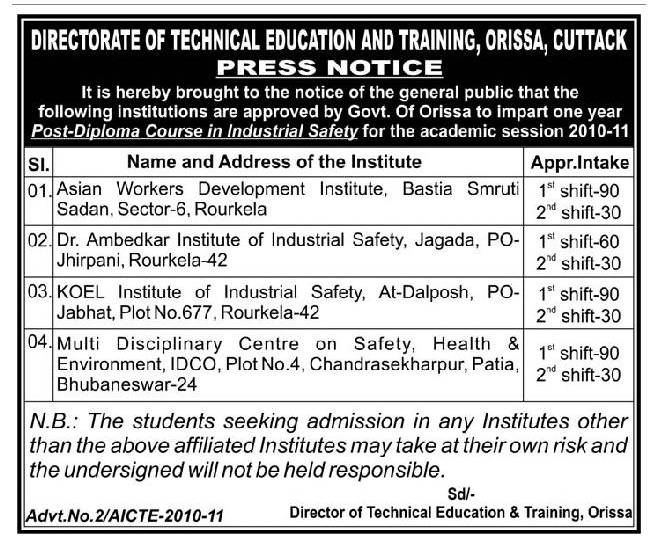
Last year three additional institutes offered this course.

October 31st, 2010
Following is from the face book page of Sri Sri University.

Selected as one of the twenty-five Most Powerful Women in Indian business by ‘Business Today’, India’s premier business magazine, 2008
Ms. Akhila Srinivasan is currently the Managing Director of Shriram Life Insurance Co. Ltd. which is a part of the $7.5 Billion Shriram Group, headquartered in Chennai, India.
Her extraordinary achievements stem from an intense personal philosophy and work ethic that have led her to become one of the key Board Level Executives of the Shriram Group, and the only female Managing Director. She is also among the very few Board Level female executives in the financial services sector in the country.
Ms.Akhila knows the importance of education and hard work; she holds a M.A., M.
Phil Degree in Economics and is currently pursuing her Ph.D.
Following is Sri Sri University’s logo as obtained from the above mentioned facebook page.
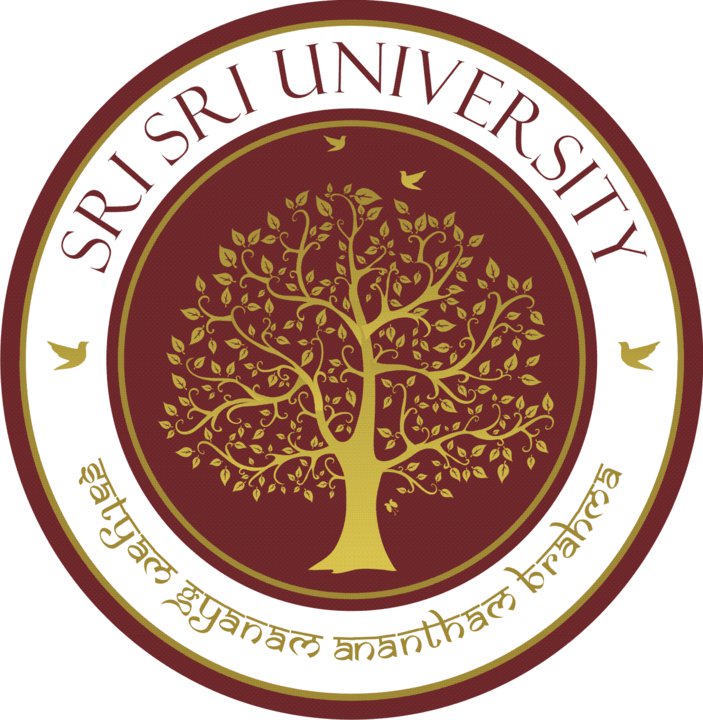
The university will start functioning in 2011 and will admit students in its business program. Following are some design diagrams of its business school taken from its facebook page: Sri Sri University Institute of Management Studies.
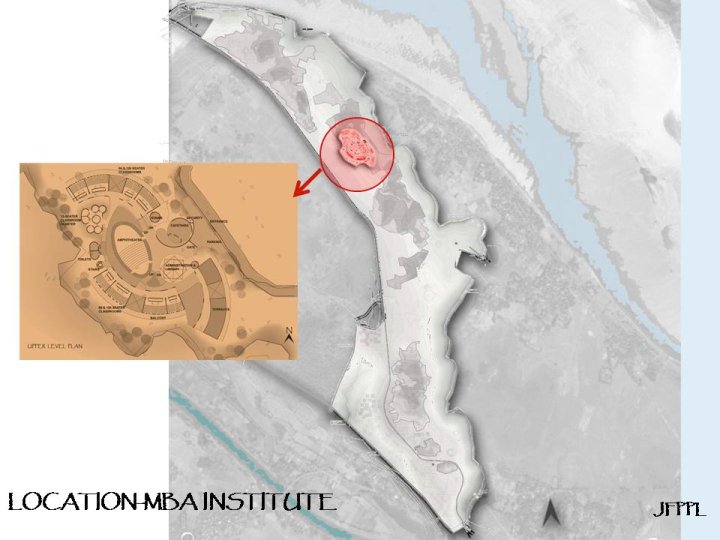
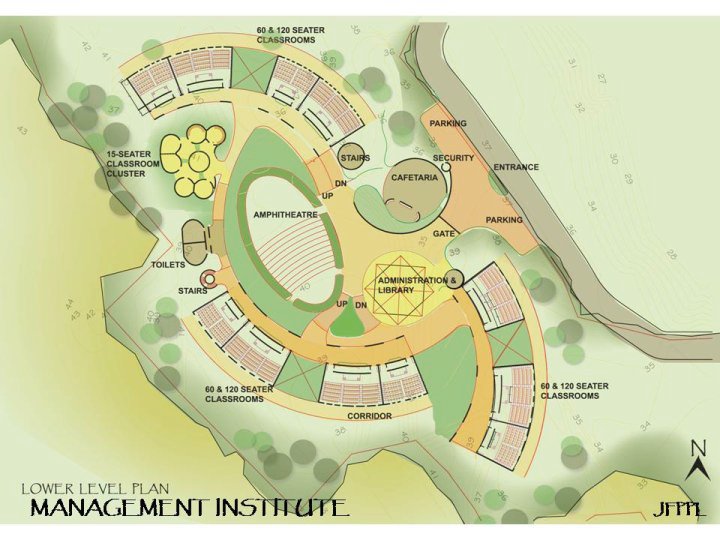
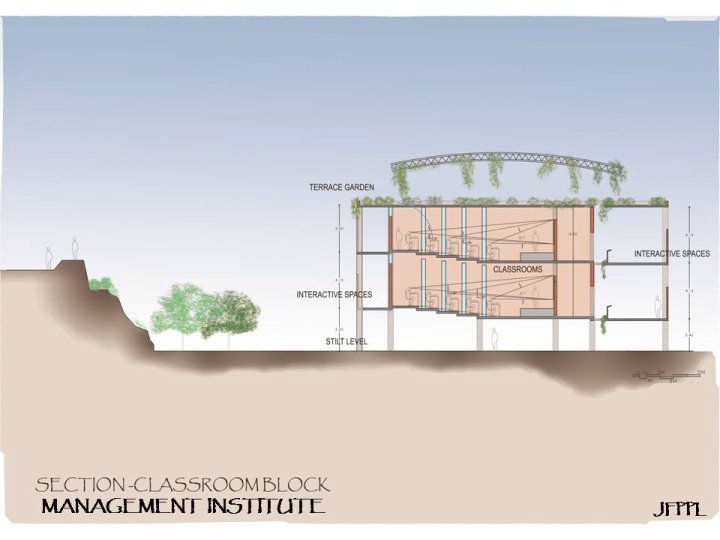

October 31st, 2010
Following is an excerpt from a report in expressindia.com.
Yale president Richard Levin on Thursday said that while China had worked on a “dramatic scale of advancement” in the education sector in the last decade, India has only now begun to work on that path. Speaking to The Indian Express after signing an MoU to launch the “India-Yale University Leadership Programme” with IIT Kanpur and IIM Kozhikode, Levin said India’s answer to China’s investment in high quality education was innovation.
“Making the advancement that China has made…that’s expensive. China has put in a lot of money in higher education… China has singled out 10 per cent of its national universities towards disproportionate investment in order to make them globally competitive,” Levin said. He added that India being a very democratic nation could not, on the other hand, single out certain institutes and provide them with funds in order to make them compete with the Ivy League. China has developed nine of its top universities in a way that they can compete with the US Ivy league.
“Whereas for India, which is a much more democratic country, it is harder to make those kinds of distinctions with government funds and say …we are going to take these five institutions and make them competitive with Yale, China is doing it and getting away with it. India’s answer is innovation universities and have the private sector raise extra resources to get really high quality institutions. That I think for India is a very adaptive strategy,” he said.
… The combination of opening to foreign universities, creating innovation varsities, reforming the accreditation — all of these I think will help for talent advance in higher education sector in India. I am very supportive of Mr Sibal’s vision and hope he is successful in his legislative agenda,” he said.
He, however, admitted that there were misgivings about ‘bureaucratic barriers” in India and that to attract foreign universities to India they would have to be allowed to set their own pay scales, promote/ advance people on their own criteria and bring students they approve by their own process.
October 30th, 2010
Following is an excerpt from a UNI report in newkerala.com.
The institute, which would be set up under the joint collaboration of the Centre and the state government, would meet the requirement of paramedical staff in the entire eastern region, including Orissa.
This was disclosed during a high-level meeting here today under the chairmanship of Chief Minister Naveen Patnaik to assess the number of various health workers posts lying vacant in the state.
Earlier in May 2009 we wrote about such institutes in the other part of the country in https://www.orissalinks.com/archives/2344.
Earlier this year in June 2010 the cabinet had approved establishment of 1 national and 9 regional institutes of paramedical sciences across the country. I guess the one in Odisha is out of those. Following is the PIB article from June 2010 on that: ( http://pib.nic.in/release/release.asp?relid=62808 )
The Union Cabinet today approved the establishment of the National Institute of Paramedical Sciences (NIPS), Regional Institutes of Paramedical Sciences (RIPS) and a scheme to support the State Government Medical Colleges for conducting paramedical courses through a one time grant.
The total project cost for the proposal is Rs.1156.43 crore with a Central share of Rs.999.31 crore (85%) and the remaining Rs.157.12 crore (15%) being borne by the States.
This measure would lead to an additional yearly intake capacity of 14,480 to the health delivery system annually when fully implemented.
The initiative will augment the supply of skilled paramedical manpower and promote quality of paramedical training through standardisation of such education/courses across the country. The main components of the proposal are: Manpower development through support to State Government Medical Colleges in the form of a one time grant and establishment of one National Institute of Paramedical Sciences and eight Regional Institutes of Paramedical Sciences in various parts of the country as well as developing the existing regional Institute of Paramedical and Nursing Sciences (RIPANS), Aizawal as the 9th RIPS .
The financial implication to support the State Government medical colleges in the form of a one time grant for commencing/enhancing intake capacity of paramedical courses at Undergraduate and Post Graduate levels will be Rs.352 crore. For establishment of one National Institute of Paramedical Sciences, the total cost proposed is Rs.108.29 crore and amount required for 8 RIPS as well as developing the existing RIPANS as 9th RIPS will be Rs.696.14 crore.
October 29th, 2010
Following are excerpts from http://chronicle.com/article/In-India-a-Top-Private/125169/.
The Kalinga Institute of Social Sciences, known as KISS, has 10,000 students, and offers a full range of educational services, including primary and secondary school, vocational education, and undergraduate and graduate courses. It’s what Mr. Samanta and his staff like to call "a KG to PG" institution, that is, kindergarten to postgraduate. (In India, graduate programs are referred to as postgraduate programs.)
For the past nine years, all his tribal students entering grade 12—many of whom had probably never seen a chalkboard before they enrolled in KISS—have graduated. By comparison, Indian public high schools graduate only 60 to 70 percent of their senior classes, on average.
KISS’s vocational, undergraduate, and graduate programs complement one another, Mr. Samanta says, because the vocational courses teach students how to "earn while they learn." While they study in college, he says, they can continue to send a third of their earnings—about $15 to $20—to their parents. For people who may be living on as little as a dollar a day, it’s a significant amount.
KIIT University and the social-sciences institute are housed on a vast campus that is on par with the best Indian universities, with air-conditioned buildings, wireless Internet, multimedia classrooms, laboratories, and conference halls. The campus feels like an ashram with walkways connecting airy buildings and small ponds scattered throughout the grounds.
October 29th, 2010
Following is from the PIB release http://pib.nic.in/release/release.asp?relid=66496.
The Union Minister for Human Resource Development, Shri Kapil Sibal had an interaction with the Directors of the eight new IITs here today. The meeting was taken to discuss issues specific to new IITs, especially with regard to the constraints they are facing in infrastructure and faculty development. All the IITs made separate presentations, consequent to which discussions were held and the following decisions were taken.
A number of IITs are facing problems of clearances with Central/State Government Departments for acquisition of the land allotted to them. In this regard, the Minister has asked for a meeting to be taken next month with the concerned State Government officials, Central Government officials and IIT Directors to facilitate the process of land acquisition.
The issue of providing salary that will attract good faculty was discussed at length. In this regard it was decided with the Minister’s approval that topping up of government approved salary can be done by the IITs from their own funds.
At present, in the IITs, the HAG scale(Rs.67,000-Rs.79,000) is applicable for 40% of the Professors in position. The new IITs expressed that they have been unable to implement this grade since it has been possible for them to recruit few faculty so far. The Minister stated, here, that the ministry would seek approval from the Finance Ministry/Cabinet to provide for a new proviso for the new IITs to be able to implement this salary grade.
The new IITs felt that that a revision in fund allocation would be required in view of the escalation of construction costs. The minister directed the officials to examine the matter and come up with a proposal in this regard.
Following is an excerpt from a report in zee news.
All the new eight Indian Institute of Technologies (IITs) established over the last three years have been asked to have their campuses ready by 2014 even as the government was mulling increasing the funds allocated for the purpose.
… IIT Patna and IIT Bhubaneswar, though, received special mention for making a good headway in infrastructure related development, they said.
Sibal also said his Ministry would move a Cabinet note on the issue of enhanced allocation of funds for campus development after the directors drew attention to cost escalation over the years.
Following is an excerpt from a report in Hindustan Times.
The human resource development ministry is planning special incentives to lure faculty from the older Indian Institutes of Technology to take up teaching posts at the country’s new breed of IITs struggling to attract teachers.
… Under the proposal for giving incentives to teachers — which the HRD ministry is currently discussing with the finance ministry — teachers at older IITs will be required to spend a ten-year tenure at one of the new-born IITs.
I don’t trust the above Hindustan Times report. I think the writer might have misunderstood something.
October 22nd, 2010
Today I came across the page http://www.perkinswill.com/work/vedanta-university-medical-precinct-master-plan.html which shows the exact location of the proposed medical college in the campus master plan of Vedanta University.

The overall campus plan is as follows:

October 11th, 2010
Following is from a report in Orissadiary.com.
The Construction work of ESI Medical College and Hospital has been started in the Jaganathpur village near Chandaka Institute of mathematics. Labour and Employment Minister Puspendra Singh Deo told the mediapersons here on Sunday that the ESI Medical College will be constructed in 25 Acres of land in an expenditures of tune of Rs 600 Crores.
About 200 students will be admitted in this medical College. The Doctors will be appointed by the ESI Medical of the Centre Government. But 42.57 % persons will be appointed in this Medical College and Hospital. Besides, the ESI will also set up Dental and Nursing college in Rourkela.
September 27th, 2010
The following is extracted from the unofficial source at http://piratecoders.co.cc/projects/iit-jee-results/jee-ranks/.
| Institute |
Open EE (11) |
Close EE (11) |
Open ME (24) |
Close ME (24) |
Last rank |
| IIT Bombay (B) |
1 |
96 |
56 |
468 |
4056 (Chemistry) |
| IIT Delhi (D) |
76 |
241 |
249 |
603 |
2883 (Biochem & Biotech) |
| IIT Madras (M) |
109 |
338 |
310 |
777 |
3678 (Biotechnology) |
| IIT Kanpur (K) |
148 |
467 |
531 |
772 |
4803 (Chemistry) |
| IIT Kharagpur (G) |
783 |
991 |
787 |
1156 |
6652 (Architecture) |
| IIT Roorkee (R) |
612 |
1699 |
1028 |
1763 |
7092 (Architecture) |
| IIT Guwahati (W) |
W16-1901 |
W-16 2336 |
1570 |
2400 |
5831 (Design) |
| IIT Hyderabad (H) |
1715 |
2552 |
1920 |
2837 |
2837 (Mech) |
| IIT Gandhinagar (N) |
2082 |
2956 |
2432 |
3216 |
3811 (Chemical Engg) |
| IT BHU (V) |
1720 |
3270 |
2519 |
3463 |
6624 (Pharma) |
| IIT Rajasthan (J) |
2765 |
3716 |
2649 |
3904 |
3904 (Mech) |
| IIT Bhubaneswar (A) |
2700 |
3866 |
2683 |
3973 |
4294 (Civil) |
| IIT Punjab (E) |
2970 |
3632 |
3162 |
3839 |
3839 (Mech) |
| IIT Indore (U) |
2976 |
3633 |
3036 |
3909 |
3909 (Mech) |
| IIT Mandi (C) |
3906 |
4164 |
3967 |
4246 |
4246 (Mech) |
| IIT Patna (P) |
3343 |
4331 |
1589 |
4435 |
4435 (Mech) |
| ISMU Dhanbad (S) |
4325 |
5174 |
3101 |
5195 |
6709 (Chemistry)
|
September 25th, 2010
Next Posts
Previous Posts











